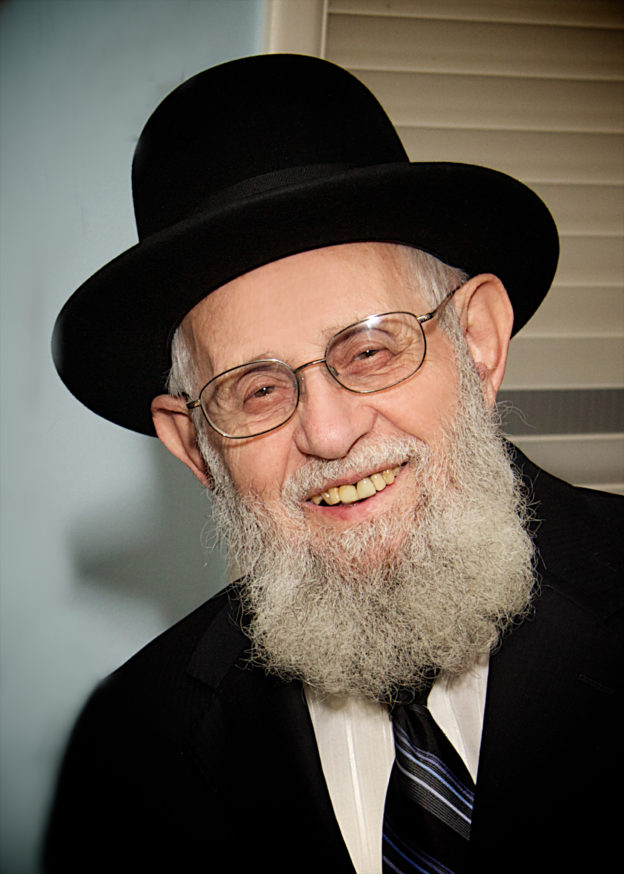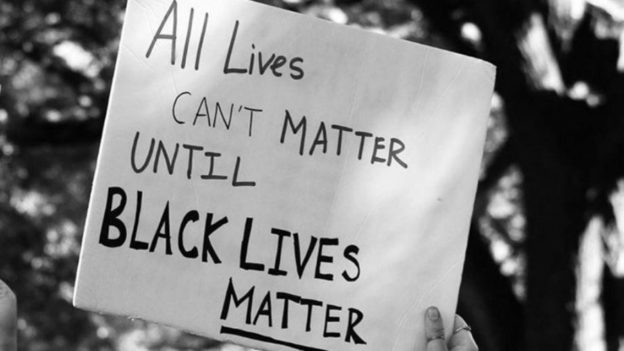You’ve no doubt heard the term “October Surprise.” But have you heard of a “Tishrei Surprise”? Yes, it’s a thing. As you can read here.


You’ve no doubt heard the term “October Surprise.” But have you heard of a “Tishrei Surprise”? Yes, it’s a thing. As you can read here.

The Gemara (Shabbos 88a) quotes “a certain Galilean” as having said “Blessed is the Merciful One, Who gave a three-fold Torah [in the broad sense, Torah, Neviim and Ksuvim] to a three-fold nation [Cohanim, Levi’im and Yisraelim] by means of a third-born [Moshe] on the third day [of separation of men and women] in the third month [Sivan].”
The stress on threes concerning the giving of the Torah, it occurs to me, reflects the essence of mesorah itself, its transmittal. Just as the most elemental physical chain needs three links, so, too, the conceptual one. Each of us is a middle link; we must have received the mesorah and then transmitted it. And our recipients then become middle links themselves.
In parshas Haazinu, we read, similarly: “Ask your father and he will tell you, your grandfather and he will say to you” Devarim 32:7). The threesome chain again.
And, intriguingly, the word employed for the father’s telling is “viyagedcha”, from the root lihagid — which Rashi elsewhere (Shemos 19:3) says implies harshness; and for the grandfather’s telling, the word is viyomru – whose root, omer, Rashi (ibid) characterizes as a “soft” communication.
The Torah may mean to teach here that a father must be an authority figure, and his transmittal of the mesorah more demanding, while a grandfather’s guidance is to be, well, grandfatherly, imparted with a more gentle touch.
(c) 2020 Rabbi Avi Shafran

[photo by Esky Cook]

Dear Subscriber,
“Black Lives Matter” is a phrase that can describe any of a number of groups or an amorphous social movement. Is anti-Semitism pervasive in any of the groups or the movement itself? Are there signs of a healthy response from black public personalities toward Jew-hatred in general? My thoughts on the matter are here.

Rosh Hashanah is the only holiday on the Jewish calendar occuring at the new moon, beginning on a night when the moon isn’t visible at all. That fact is hinted at in the posuk “Tik’u bachodesh shofar bakeseh liyom chageinu” (“Sound the shofar on the New Moon, at the appointed time for the day of our festival”) — Tehillim 81:4. The word bakeseh, “at the appointed time,” can be read to mean “covered.”
The moon is, famously, a symbol of Klal Yisrael. It receives its light from the sun, as we receive our enlightenment from Hashem; it wanes but waxes again, as we do throughout history; and it is the basis of our calendar.
Various ideas lie in the oddity of Rosh Hashanah being moonless. One that occurred to me has to do with that latter connection, that the moon is our marker of time, our clock, so to speak. When we repent of a sin, Chazal teach, the sin can be erased from our past — even, if our teshuvah is complete and sincere, turned into a merit!
And so, we are particularly able on Rosh Hashanah, the beginning of the ten days of teshuvah, to undermine time, to go back into the past and change it.
What better symbol of that power than to remove our “clock” from the sky?
Ksiva vachasima tovah!

The United States has long provided fertile ground for all manner of cults and conspiracy theories. QAnon is but the latest and, thanks to the internet and to the respectability bestowed on it by a number of candidates for public office, it has become alarmingly popular.
That popularity is a broad danger in itself. But it should concern Jews in particular, as I note in my Ami Magazine column of last week, which you can read here.

The Midrash (Yalkut Shimoni) at the start of parshas Nitzavim sees in the parsha’s opening words, “You are standing today” the message that, despite the sins and travails of Klal Yisrael up to that point, and the klalos enumerated in parshas Ki Savo, the nation is still standing. Indeed, the Midrash continues, “the curses stand you up [ma’amidos eschem].” In other words, they strengthen you.
The Second Law of Thermodynamics states that physical systems naturally degenerate into more and more disordered states.
Living systems, though, seem to act otherwise. A domeim, a non-living item like a rock or mineral, is indeed entirely subject to entropy. A tzomei’ach, though, a plant, which grows, less so. And an animal, a chai, even less so, as it can also move around to promote its wellbeing.
And a human is even more able to defend against entropy, manipulating his environment, using intelligence, tools and creativity to protect himself.
The highest rung on the hierarchy, according to sefarim, is Yisrael. Perhaps we are entropy-resistant, too, in a special way — in the ability to turn challenges that would naturally wear away other people, leaving them feeling dejected and hopeless, into not just perseverance but renewed strength. Haklalos ma’amidos eschem.
The Churbanos of the Batei Mikdash, for example, were followed with determined and successful Jewish renewal, as was the most recent churban, that of Jewish Europe. Parts of Klal Yisrael have returned to Eretz Yisrael, and Torah study and practice thrive throughout the world.
And in our personal lives, too, as Rav Dessler writes, our failings and fallings can, through our pain and teshuvah, become fuel for our determination to reach even greater heights.
A timely thought during these waning days of Elul.

Being sensitive is a good thing. Well, to a point. When sensitivity goes too far, though, it can enter silly or even slander territory. Some examples are in my Ami column of last week, which you can read at:
https://www.amimagazine.org/2020/08/26/sensitivity-gone-wild/
I was the guest on a Tablet Magazine podcast last week, concerning the open letter that I and others issued a few weeks ago about Jews, political rhetoric and partisanship. You can listen to it at: https://www.tabletmag.com/podcasts/take-one/eruvin-17
And finally, the organization for which I have proudly worked for more than a quarter century, Agudath Israel of America, is currently conducting a fundraising campaign. I have been amazed at how hard and effectively my Agudah colleagues have worked over the past challenging months — as they have over the years.
Please consider making a donation toward keeping the Agudah going. Just click on “donate” at the bottom of the page at the website below. And if you include a short note in the designated “message or dedication” box about how you heard about the campaign, I will be most honored:
https://www.charidy.com/agudahnational
Thank you and have a wonderful week!

The very first Rashi in the Torah, quoting a Midrash, indicates the importance of Bikkurim, the first fruits offering that opens parshas Ki Savo. Bikkurim is one of the “raishis” concepts that the word Beraishis (understood as “for the sake of something called raishis) refers to.
And Bikkurim, as evident from the words that are spoken when they are brought, is an expression of “hakaras hatov,” a truly fundamental Torah concept that is usually, though, not entirely accurately, thought of as “gratitude.”
In truth, it is something more subtle and sublime, indicated in a direct translation of the phrase: “recognition of the good.” That is why an example of the concept, as per the Gemara (Bava Kamma, 92b) is the commandment that “You shall not abhor an Egyptian, because you were a stranger in his land,” in last week’s parsha. And why the maxim expressing it is “Don’t throw a clod of dirt into a well from which you drank” (ibid).
So even someone who intended you nothing good, even an inanimate object, deserves hakaras hatov. How does that work?
My understanding is that the recognition, while expressed to a person, people or object, is ultimately to Hashem, for causing the good – in the case of the Egyptian slavery, the “purification” (kur habarzel) needed to prepare Klal Yisrael to receive the Torah; in the case of the well, its appearance when one was thirsty. The action of hakaras hatov is through the Egyptians and through the well but its ultimate expression is to Hashem.
I remember having negative feelings when on rare occasions I would see a certain person who in effect once forced me to leave a job and community I loved. But then, pondering how what resulted in the end was in fact a tremendous brachah for me and my family, I realized that I needed to feel hakaras hatov toward him. Well, toward him, which I indeed came to feel, but as a means to truly recognizing the good that Hashem had bestowed.

August 28, 2020
By: Rabbi Chaim Dovid Zwiebel
A number of people have called my attention to an anti-Agudath Israel screed that was recently published as an op-ed column in a Jewish periodical. The article defames Rabbi Moshe Sherer z’l, distorts the words of my colleague Rabbi Avi Shafran, and slanders the Agudah. I feel I must respond.
The article insinuates that the Agudah, going back to 1980 when Rabbi Sherer served as president of the organization and continuing still through today, supports Democrats over Republicans to the detriment of our community’s interests, and does so for financial gain. Thus, writes the author, “the late Rabbi Moshe Sherer of Agudath Israel had promised President Jimmy Carter the Orthodox vote [in the 1980 presidential election]. We can only speculate what he got in return for choosing the spendthrift candidate over the moral candidate.”
To anyone who knew Rabbi Sherer, the notion that this legendary Agudah leader who enjoyed the absolute trust of the greatest Gedolei Yisroel would favor a “spendthrift” political candidate in order to get something “in return,” is beyond preposterous and deeply offensive. What is the author’s source for Rabbi Sherer’s alleged promise to President Carter?
And what is his source for the equally startling assertion that Vice President Walter Mondale called Rabbi Sherer to complain about people wearing Reagan buttons on Ocean Parkway, to which Rabbi Sherer supposedly replied that they were disciples of a “fringe rabbi” who had no real following in the community? Whether any rabbonim encouraged people to wear Reagan buttons I do not know, but it’s a bit hard to believe that Vice President Mondale would place a special call to complain about the buttons of Ocean Parkway. And it’s even harder to believe that Rabbi Sherer would denigrate a choshuve rav in conversations with any other people, let alone the Vice President of the United States.
How does the author know the details of these alleged conversations? Were they disclosed in the public memoirs of President Carter and Vice President Mondale? Have any historians of that era written about these alleged conversations? Did Rabbi Sherer confide in him? Did Rabbi Sherer reveal this information at the Agudah convention? Did it get written up in the Jewish Observer? Are there minutes of these conversations in the Agudath Israel archives?
I would venture to say not. I would venture to say these conversations probably never took place. And yet they are cited in the article as confirmed fact, and for one reason alone: to attack the Agudah.
The author intensifies that attack by pointing to one of Rabbi Avi Shafran’s recent articles in which he opines that most Democrats, including Vice President Biden, are reasonable people and generally supportive of Israel. This opinion, in the author’s eyes, constitutes “criminal naivite and negligence at best, cynical manipulation and distortion at worst.”
Further, it proves that “Rabbi Avi Shafran and Agudath Israel were still engaging in their misguided behavior from 1980.” (Just to make sure his readers understand what’s really on his mind, the author congratulates himself for his temperate language in describing the Agudah’s behavior as simply “misguided”; “the alternative,” he ominously proclaims, “is too awful to contemplate” – thereby inviting his readers to engage in precisely such awful contemplation.)
While it is true that Rabbi Shafran serves as Agudath Israel’s public affairs director, he also frequently speaks in his own voice as well, not as a spokesman for the Agudah but as a private individual. His column about the Democratic Party was an expression of his personal views, and cannot be attributed more generally to the Agudah.
But beyond that, it is dismaying that the anti-Agudah op-ed columnist cites Rabbi Shafran’s article so selectively, treating it as a de facto endorsement of Mr. Biden and the Democratic Party. In fact, Rabbi Shafran took pains to disavow any such endorsement. Here’s what he wrote:
“None of the above is intended as a call to support Mr. Biden. There is ample and understandable enthusiasm in our community for President Trump, who has taken a number of steps to show support for Israel. And there are other issues where our stances resonate with the Republican ones. Personally, I am a registered Republican, and have, over decades, most often voted for Republican candidates.
“I’m suggesting only one thing: that we refrain from demonizing either of our country’s major political parties.”
Finally, a word to the periodical that published this anti-Agudah screed: What conceivable to’eles is there in attacking Rabbi Sherer? What heter is there to publicly denigrate an organization that works tirelessly and effectively under the leadership of gedolei Yisroel to promote the interests of the klal?
The writer’s words, were they true, would be lashon hora of the worst sort. As it is, they are worse, a hotzo’as shem ra, an inexcusable slander.